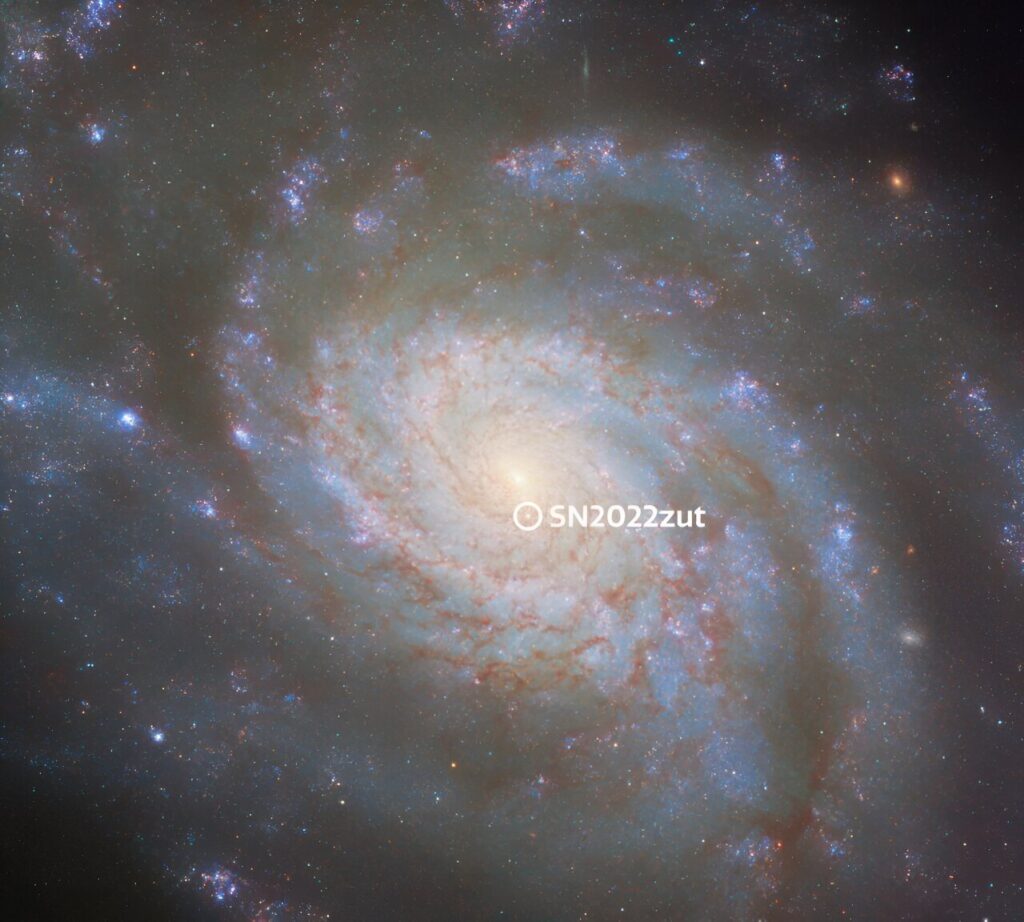In 2022, a supernova erupted in the distant galaxy NGC 3810. At the beginning of 2023, it was still quite bright, so the Hubble Space Telescope began to study it. It was able to determine the distance to this object.

How are distances to astronomical objects measured?
Measuring the distance to truly distant objects such as galaxies, quasars, and galaxy clusters is an important task in astrophysics, especially when it comes to studying the early Universe, but it is difficult to accomplish.
We can only directly measure the distances to a few nearby objects, such as the Sun, planets, and some nearby stars. In addition, astronomers have to use various indirect methods; one of the most important is the study of Type Ia supernovae, and this is where the NASA/ESA Hubble Space Telescope excels.
NGC 3810, the galaxy in this image, was the birthplace of a Type Ia supernova in 2022. In early 2023, Hubble focused on this and a number of other galaxies to closely study recent Type Ia supernovae. They are the result of a white dwarf explosion and their peak brightness is very stable. This property allows astronomers to use Type Ia supernovae to measure distances. We know how bright supernovae of this type should be, so we can determine how far away they are by how dim they appear.
Intergalactic dust and distance measurement
One of the problems about this method is intergalactic dust. Because it blocks some of the supernova’s light, astronomers need to determine how much the dust reduces the light to accurately measure the supernova’s brightness and calculate its distance. Hubble’s unique capabilities offer them a smart way to do this.
Astronomers are using Hubble to image the same type Ia supernovae in ultraviolet light, which is almost completely blocked by dust, and in infrared light, which passes through dust with little or no obstruction. By carefully noting how much light passes through at each wavelength, astronomers can determine how much dust is between Hubble and the supernova, allowing them to confidently calibrate the relationship between the supernova’s brightness and its distance.
Hubble’s unique ability to observe in the ultraviolet and infrared light bands in great detail with a single instrument makes it ideal for such observations. Indeed, some of the data used to create this beautiful image of NGC 3810 is focused on its 2022 supernova.
Different ways to measure cosmic distances
There are many ways to measure cosmic distances, but Type Ia supernovae are one of the most useful and accurate tools because they are so bright. Astronomers must use other methods, either as an independent check on other distance measurements or to measure at much closer or farther distances.
One such method, which also works for galaxies, is to compare their rotational speed with their brightness. According to this method, NGC 3810 is located at a distance of about 50 million light-years from Earth.
Based on materials from phys.org

